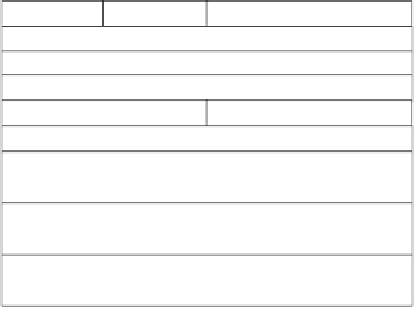Information Technology Reference
In-Depth Information
•
For echo request and reply, the message header is followed by an 8-bit identifier, then an
8-bit sequence number followed by the original IP header.
•
For destination unreachable, source quelch and time, the message header is followed by
32 bits which are unused and then the original IP header.
•
For timestamp request, the message header is followed by a 16-bit identifier, then by a
16-bit sequence number, followed by a 32-bit originating timestamp.
1
2
3
4
5
6
7
8
9
10
11
12
13
14
15
16
Version
Header length
Value = 0
Total length
Identification
Fragment offset
Time-to-live
Value = 1 (ICMP)
Header checksum
Source IP address
0
D
M
IP packet
header
Destination IP address
Options
8 bits
8 bits
16 bits
Additional
information
IP packet header
Type
Code
Checksum
ICMP message
Figure 23.4
ICMP message format
Where:
•
Pointer (8-bit) - identifies the byte location of the parameter error in the original IP
header. For example, a value of 9 would identify the protocol field, and 12 would identify
the source IP address field.
•
Identifier (16-bit) - helps the matching of requests and replies (possibly set to zero). It
can be used to identify a unique connection.
•
Sequence number (16-bit) - helps in matching request and replies (possibly set to zero).
•
Timestamps (32-bit) -this is the time in milliseconds since midnight UT (universal time).
If this is not possible then it is anytime, as long as the high-order bit of the timestamp is
set to a 1 to indicate that it is non-standard time.
•
Gateway address (32-bit) - the address of the gateway to which network traffic specified
in the original datagram should be sent to.
•
Internet header + 64 bits of data datagram - this is the original IP header and the first 64
byte of the data part. It is used by the host to match the match to the required high-level
application (such as TCP port values).






















